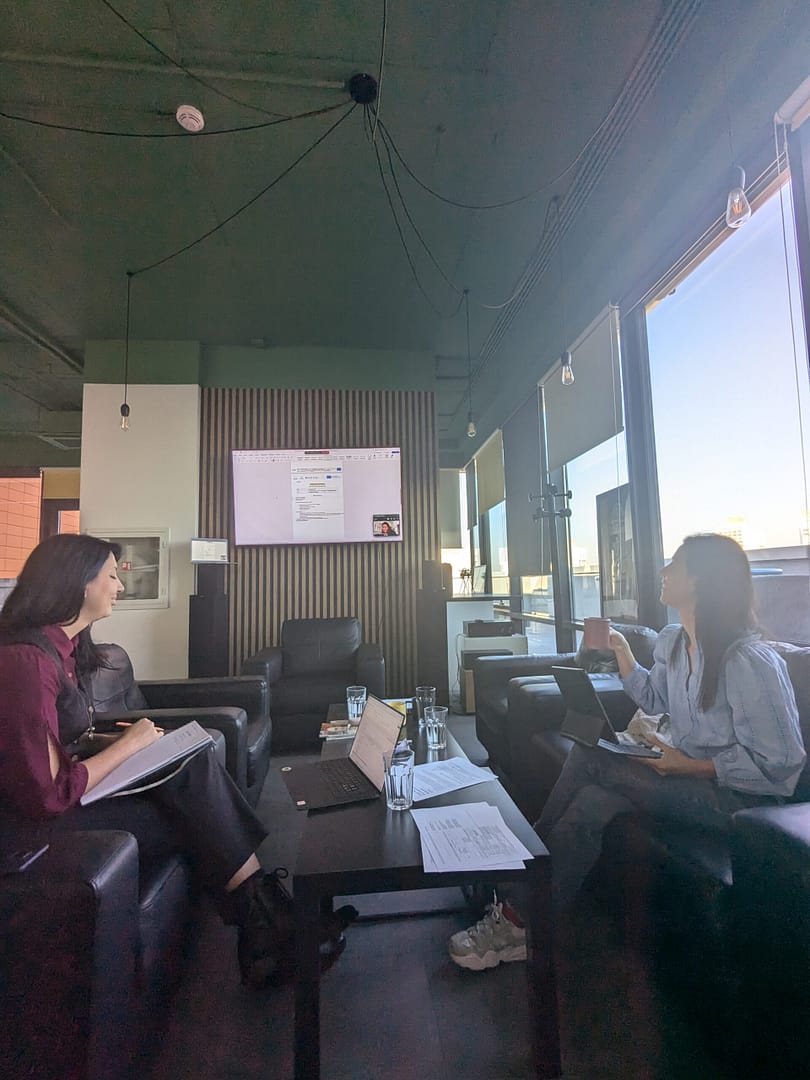Learning Outcomes:
- Participants will learn to apply co-design methods to create community-based sustainability initiatives.
Duration:
55 minutes
Materials needed:
- PPT Presentation
- projector
- laptop
- flipchart
- markers
- sticky notes
- handouts of Co-design methods and project planning templates
Preparation
Research and Gather Resources
- Collect examples of successful community sustainability projects to inspire participants. These examples should include a variety of initiatives from different contexts, such as urban and rural communities, various industries, and regions. Ensure these examples highlight different aspects of sustainability, such as environmental, social, and economic benefits.
- Prepare case studies or videos showcasing real-world examples that can help participants understand what a successful sustainability project looks like. These could be projects focused on waste reduction, renewable energy, sustainable agriculture, or water conservation.
- If relevant, gather local case studies or examples from regions similar to the participants’ communities. This can help make the discussion more relatable and practical.
- Make sure to have digital resources available for participants to access during the session, such as links to sustainability databases or online project planning tools.
Develop and Print Planning Templates
- Create project planning templates that are easy to follow and provide structure for participants to map out their community resources, identify sustainability challenges, and define specific actions for their proposed project.
- Each template should include sections for:
- Community assets: Identifying strengths, such as available resources, partnerships, or infrastructure.
- Challenges: Mapping key sustainability challenges the community faces (e.g., waste management, pollution, lack of green spaces).
- Stakeholders: Identifying who in the community can be involved in the project (e.g., local government, businesses, residents).
- Action steps: Laying out a series of actions that can be taken to implement the sustainability initiative, including both short-term and long-term steps.
- Make enough copies of these templates for each group, and ensure that there are digital versions available if the session is conducted online.
Room Setup
Flexible seating: Arrange the room with flexible seating that allows for collaboration. Round tables or workstations are ideal to encourage group discussion and planning. Ensure that each group has plenty of space to spread out materials like flip charts, sticky notes, and templates.
Materials at each station: Prepare flip charts, markers, sticky notes, and other writing materials at each table. These will be used for brainstorming, community mapping, and developing project ideas. Ensure there is enough for all participants to contribute actively.
Technology check: If using a projector, ensure it is set up properly for showcasing examples, videos, or presentations on community sustainability projects. Test all technology in advance to avoid any disruptions.
Digital tools: If the workshop is being conducted online or hybrid, set up digital collaboration tools such as Miro, Jamboard, or Google Docs. Create virtual breakout rooms for group discussions and ensure that participants know how to access and use the digital planning templates. Provide a tutorial if necessary.
Participant Preparation
Pre-session instructions: If possible, send participants information about the co-design workshop in advance. This could include a brief overview of the activity, examples of sustainability challenges, and a request to think about sustainability issues in their community that they would like to address.
Pre-read materials: Provide participants with optional pre-reading materials or links to examples of community sustainability projects. This will help them come prepared with ideas and understanding of what co-design entails.
Description
Participants will work in small groups to map their communities, identify key sustainability challenges, and design actionable projects. The workshop is designed to give participants hands-on experience applying co-design methods to sustainability issues. Each group will brainstorm and create a plan for a sustainable community initiative, guided by the templates provided. The trainer will facilitate the process, moving between groups to offer support, answer questions, and ensure that discussions stay on track.
Step-by-Step Instructions:
- Introduce the concept of co-design and explain how it can be used to address community sustainability challenges. Provide examples of successful projects.
- Divide participants into small groups and give them 15 minutes to map their communities, identifying both strengths and challenges related to sustainability.
- Once the mapping is complete, ask groups to brainstorm ideas for community-based sustainability projects, using the project planning templates to outline actions and solutions.
- After 30 minutes of brainstorming and planning, each group presents their project idea to the larger group.
End with a peer feedback session, where participants discuss how they could implement and sustain these projects in their own communities.
Debriefing
Each group presents their project plans, receiving feedback from their peers and the trainer. The discussion helps ensure that the projects are practical, community-focused, and aligned with sustainability principles.
Tips
Support facilitation: If there are co-facilitators or assistants, brief them on the goals and flow of the session. Provide them with an outline of key discussion prompts and instructions on how to support participants during the co-design process. Encourage participants to think creatively, but keep the focus on creating practical and actionable plans. If participants are from different communities, encourage them to share examples from their home regions to inspire others.
Guiding questions: Prepare a list of guiding questions to help participants if they get stuck during the brainstorming process. These might include: “What sustainability issue is most urgent in your community?” or “What resources do you already have that can support this project?”
Monitor time: Plan how the time will be managed throughout the session. Set reminders for transitioning between phases (e.g., community mapping, brainstorming, presentation) to ensure each group has enough time to complete the activity.
Integrating the resources
- Before the Session: Trainers can familiarize themselves with the co-design methodologies by reviewing resources such as the IDEO toolkit and the Ellen MacArthur Foundation’s case studies. They can also use tools like Miro or Jamboard to set up digital collaborative spaces in advance.
- During the Session: Resources such as Miro, Jamboard, and Google Docs can be used in real-time for community mapping and brainstorming. Case studies from the Sustainable Communities Online platform can be shared to give participants concrete examples.
- After the Session: Trainers can direct participants to resources such as the Global Footprint Calculator or Project Drawdown Solutions Library to further explore sustainability solutions and develop long-term plans for their communities.
Handouts and resources
Project planning template handout
Co-design process stages and methodologies handout
IDEO’s Human-Centered Design Toolkit
Participatory design methods for sustainable interaction design
Example of an Ethno-Architecture
Examples of Successful Community Sustainability Projects: Ellen MacArthur Foundation-Circular Economy Case Studies
Project Planning and Community Mapping Tools: Miro
Project Planning and Community Mapping Tools: Padlet
Sustainability and Community Engagement Learning Platforms:The Sustainability Literacy Test (Sulitest)
Global Footprint Network (Ecological Footprint Calculator)
Community-Based Participatory Research Resources:Community Tool Box (Work Group for Community Health and Development)
Toolkits and Templates for Planning Sustainability Projects:Project Drawdown Solutions Library
Sustainability Planning Toolkit (ICLEI)
Design for sustainability (UN)
The trainer(s) can use these handouts for the session or create their own, as long as the same basic concepts are included (Co-design principles stages, methodologies, sustainable community practices).
More To Explore
Co-Design Processes and Methodologies
Learning Objectives (LOs)
Mentoring methodologies and strategies
Learning Objectives (LOs)


